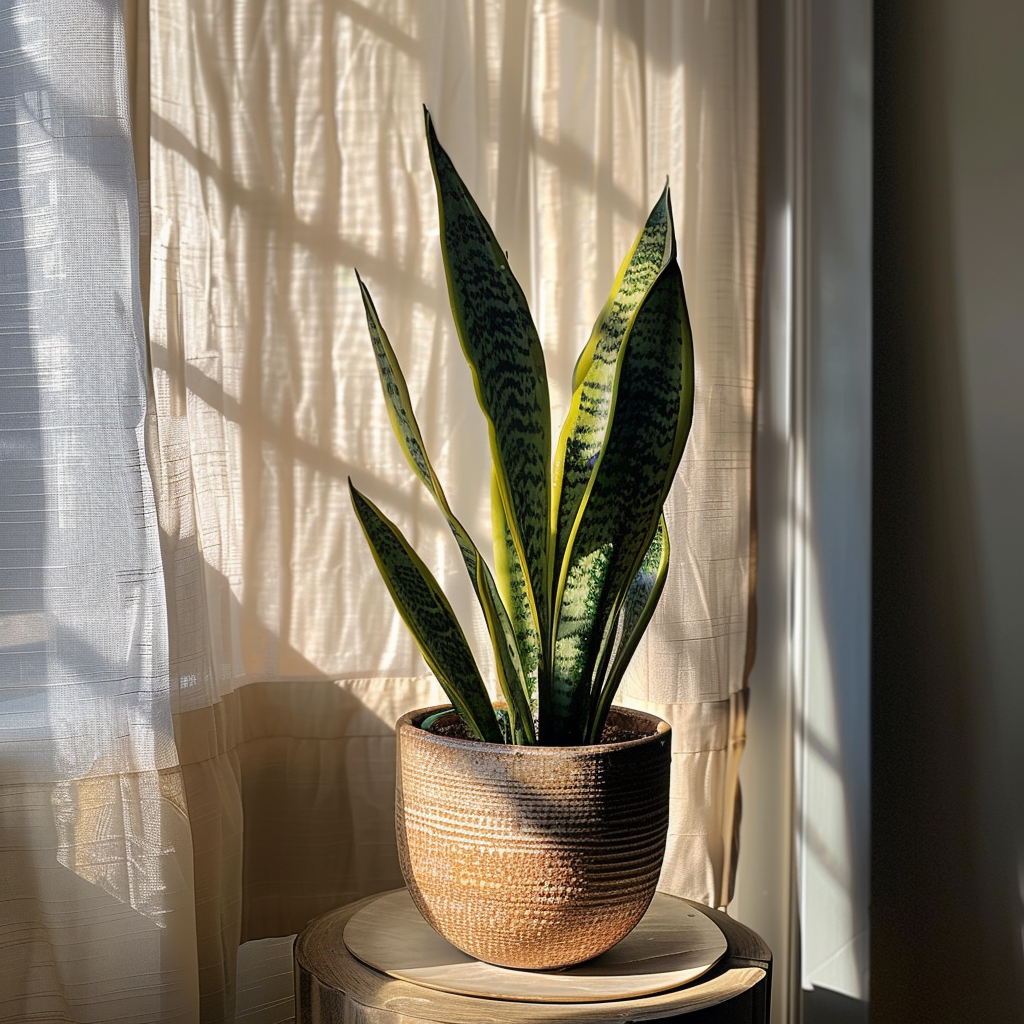Fixing Snake Plant Woes: Troubleshooting Guide
Snake plants, with their resilient nature and striking appearance, are beloved by many plant enthusiasts. However, like any other living organism, they can face their fair share of challenges. Despite their reputation for being tough survivors, snake plants can succumb to various issues if not properly cared for. From overwatering mishaps to pest invasions, these problems can potentially endanger the health of your cherished green companion.
But fear not! With a little knowledge and proactive care, you can keep your snake plants thriving and vibrant. By understanding the common problems they may encounter and implementing preventative measures, you can ensure your leafy friends stay robust and resilient. Let's delve into the potential pitfalls and discover how to navigate them, safeguarding the beauty and vitality of your beloved snake plants.
Overwatering
To ensure your snake plant thrives, it's crucial to keep an eye out for signs of overwatering. Here's a simple method: Insert a stick or your finger about an inch deep into the soil. If it feels wet or moist and you observe water pooling on the soil's surface, these are indications that the plant might be receiving too much water. This basic check allows you to adjust your watering routine accordingly and prevent potential issues caused by overwatering.
Clues Your Snake Plant's Getting Too Much Water: Signs Your Snake Plant Needs More Water
Drooping Leaves: Overwatering can lead to root rot, causing the roots to degrade and unable to transport water and nutrients properly, resulting in drooping leaves.
Mushy Leaves: Overwatering can cause excess moisture in the leaves, leading to soft, mushy textures.
Brown and Mushy Roots: Excessive watering can result in root rot, where the roots become brown and mushy, compromising the plant's ability to absorb nutrients.
Preventative Care Tips:
Allow the soil to dry out completely between watering sessions to prevent overwatering. Check the moisture level on a regular basis; if it feels dry, it's time to water.
Soil Selection: Use a well-draining potting mix specifically designed for succulents or cacti to avoid water retention in the soil.
Pot Choice: Opt for pots with drainage holes to ensure excess water can escape freely, reducing the risk of waterlogging the roots.
Overwatering Troubleshooting:
Identifying and addressing overwatering issues is crucial for maintaining the health of your snake plant. Here are steps to take if you suspect overwatering:
Trim Mushy Roots: If you notice mushy roots when unpotting your snake plant, carefully trim away the affected areas to promote healthy regrowth.
Allow Soil and Roots to Dry Out Completely: After unpotting, allow both the soil and roots to dry out completely. Leave the plant in a well-ventilated area for several days until the soil and roots are bone dry before repotting.
Underwatering:
Yes, while overwatering is a common issue that can harm snake plants, it's essential to remember that the opposite extreme—underwatering—can be equally detrimental. Just as too much water can suffocate the roots and lead to rot, insufficient water can cause the plant to wilt, dry out, and ultimately perish. Finding the right balance in watering frequency is key to maintaining the health and vitality of your snake plant.
Signs Your Snake Plant Needs More Water
Wilting Leaves: Underwatering can cause the leaves to become limp and wilted as the plant struggles to access sufficient moisture.
Dry, Crisp Leaves: Insufficient water intake can lead to the leaves drying out and becoming brittle or crisp to the touch.
Stunted Growth: When a snake plant is underwatered, its growth may slow down or halt altogether as it conserves energy to survive.
Preventative Care Tips:
Monitor Soil Moisture: Check the soil moisture regularly and water the plant when the top inch of soil feels dry to the touch.
Adjust Watering Frequency: If you notice signs of underwatering, increase the frequency of your watering sessions to ensure the plant receives an adequate amount of moisture.
Choose Suitable Potting Mix: Use a well-draining potting mix that allows excess water to escape freely, preventing waterlogging and ensuring the roots have access to oxygen.
Troubleshooting:
Water Thoroughly: When watering, ensure you thoroughly moisten the entire root ball to rehydrate the plant effectively.
Monitor Growth: Keep an eye on the plant's growth and adjust your watering routine accordingly to ensure it receives sufficient moisture for healthy development. Remember, snake plants are slow growers, so there's no need to worry if you don't see rapid changes in their growth.
Sunburn and Overlighting
Exposure to excessive sunlight or bright artificial light can lead to sunburn and overlighting in snake plants. It's essential to monitor your plant's exposure to light to prevent these issues and ensure its overall health.
Detecting Sunburn in Your Snake Plant:
Fading or Bleached Leaves: Excessive sunlight can cause the leaves of snake plants to become faded or bleached, losing their vibrant green color.
Brown or Yellow Spots: Direct sunlight or intense artificial light can result in brown or yellow spots on the leaves of snake plants, indicating sunburn damage.
Leaf Curling or Wilting: Overlighting can lead to leaf curling or wilting as the plant struggles to cope with excessive light exposure.
Preventative Care Tips:
Monitor Light Exposure: Place your snake plant in a location with indirect sunlight or filtered light to prevent sunburn and overlighting.
Adjust Light Levels: If your plant is experiencing excessive light exposure, consider moving it to a spot with lower light levels or using sheer curtains to filter sunlight.
Rotate the Plant: Regularly rotate your snake plant to ensure even light exposure on all sides and prevent one-sided sunburn or overlighting.
Sunburn and Overlighting Troubleshooting:
Identifying and addressing issues related to sunburn and overlighting is essential for maintaining the health of your snake plant. Here are steps to take if you suspect sunburn or overlighting:
Relocate the Plant: If your snake plant is showing signs of sunburn or overlighting, move it to a location with less intense light.
Provide Shade: Shield the plant from direct sunlight or intense artificial light by placing it in a shaded area or using sheer curtains to diffuse light.
Monitor Light Levels: Regularly monitor the light levels in your plant's environment and adjust its placement accordingly to prevent future issues.
Fertilizer Problems:
Excessive fertilization can spell trouble for your snake plant's well-being, leading to a host of issues that can hinder its growth and vitality. It's crucial to keep a close eye on your plant's fertilization regimen to ensure it receives the nutrients it needs without overdoing it. Here's how to spot and address fertilizer problems in your snake plant:
Indicator of Fertilizer-Related Issues:
Weak, Floppy Growth: Overfertilizing can result in rapid but weak growth, causing the leaves to become soft and bend easily.
Brown Leaf Tips: Excessive fertilizer can cause the tips of the leaves to turn brown and crispy, indicating a nutrient imbalance.
Stunted Growth: Too much fertilizer can overwhelm the plant, inhibiting its ability to absorb water and nutrients properly, resulting in stunted growth.
Burnt or Yellow Leaves: High concentrations of fertilizer salts can burn the roots and lead to yellowing or browning of the leaves.
Preventative Care Tips:
Dilute Fertilizer Solutions: Always follow the manufacturer's instructions and dilute fertilizer solutions to avoid overapplication.
Use Balanced Fertilizers: Opt for balanced fertilizers with equal proportions of nitrogen, phosphorus, and potassium to prevent nutrient imbalances.
Fertilize Sparingly: Snake plants are relatively low-maintenance and don't require frequent fertilization. Apply fertilizer sparingly, typically once every few months during the growing season.
Fertilizer Troubleshooting:
If you suspect fertilizer problems in your snake plant, take the following steps to address the issue:
Tanner the Planter explains how to flush out mineral build-up from your plants
Flush the Soil: If you've applied too much fertilizer, flush the soil with water to leach out excess salts and restore the plant's nutrient balance.
Trim Damaged Leaves: Remove any brown or yellow leaves to improve the plant's appearance and encourage new growth.
Adjust Fertilization Routine: Scale back on fertilization or switch to a more diluted fertilizer solution to prevent further issues.
Pests and Bacterial Problems
Pests and bacterial issues can wreak havoc on your snake plant's health if left unchecked, causing damage to its foliage and compromising its overall well-being. Here's how to identify, prevent, and address common pest and bacterial problems in your snake plant:
Pest and Bacterial Concerns:
Spider Mites: These tiny pests can infest snake plants, causing stippled leaves and webbing between foliage. Spider mite infestations are often accompanied by yellowing or browning of leaves.
Mealybugs: Mealybugs are another common pest that can affect snake plants, appearing as white, cottony masses on leaves and stems. They feed on plant sap, leading to weakened growth and yellowing leaves.
Root Rot: Bacterial and fungal pathogens in the soil can cause root rot in snake plants, resulting in mushy, brown roots and wilting foliage. Overwatering is a common cause of root rot in snake plants.
Preventative Care Tips:
Inspect New Plants: Before introducing a new snake plant to your collection, thoroughly inspect it for signs of pests or disease, such as webbing, white masses, or discolored foliage.
Quarantine Affected Plants: If you suspect a pest or bacterial issue in one of your snake plants, isolate it from other plants to prevent the spread of infestations or infections.
Maintain Good Hygiene: Keep your snake plant's environment clean by regularly removing debris and fallen leaves, which can harbor pests and pathogens.
Pest and Bacterial Troubleshooting:
If you notice signs of pests or bacterial issues in your snake plant, take the following steps to address the problem:
Remove Infested Leaves: Prune away any heavily infested or damaged leaves to prevent the spread of pests or disease to healthy foliage.
Treat with Neem Oil: Apply neem oil or insecticidal soap to affected plants to control pest infestations. Follow the manufacturer's instructions carefully for best results.
Adjust Watering Routine: If root rot is suspected, allow the soil to dry out completely between watering sessions and consider repotting the plant in fresh, well-draining soil.
Remember that stunted growth doesn't necessarily mean your snake plant is dying. These resilient plants are highly resistant and easy to care for. If you notice a crisp or yellowed area, simply trim it away. Most common issues stem from overwatering, so always check for root rot and allow the plant some time to recover on its own. Snake plants often thrive on neglect and are known for their resilience. So, don't be afraid to give them a chance – they're tough survivors that can bounce back with a little care and attention.














